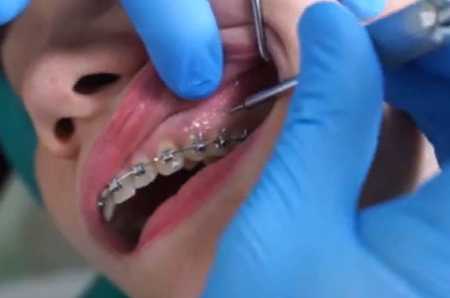When we talk about alternatives to dental implants, we mean alternatives to traditional implants, not to dental implants in general. Read more about this in our article.
What Is a Dental Implant
In general, dental implantation itself is considered a definite alternative to removable dentures. However, dental implantation is a complex surgical procedure, so it has a number of contraindications, as well as other therapeutic measures. In this regard, implantation may not always be indicated for every patient, although it should be noted that modern dentistry has quite a large number of remedies for many problems that prevent implantation.
Thus, if implantation is not feasible, then (including) removable prosthetics can be an alternative to implantation of artificial “roots”.
Suppose the following situation: there are strong and healthy teeth on each side of the defective area. Possible solutions to the problem (to fix the defect):
- Use the adjacent teeth as support for a bridge;
- Fabricate a partial denture;
- Implantation and prosthetics on implanted implants.
The first point (with a bridge denture) is immediately “cancelled”: a good doctor will not grind down healthy teeth to make them “load-bearing” for the “bridge” support. That leaves us with two options. Since we assume that implantation is contraindicated for some reason, then (by “elimination method”) we see that there is only one alternative – to make a partial denture.
Modern Alternatives
Modern removable prostheses are comfortable, robust, reliable and quite aesthetically pleasing. This is largely due to improvements in the materials used to make these types of prostheses.
The situation described above is just an example, but in general removable prosthetics can be an alternative to dental implants in certain circumstances.
Telescope Crown Prosthetics
This type of restoration provides a good fit for the prosthesis. Special crowns that are bonded to the teeth are used to support the prosthesis and no implants are needed for fixation of the prosthesis.
The principle is as follows: the teeth that cannot be retained “alive” are ground to fit special type crowns. The denture base will have cavities (cavities) corresponding in shape and size to the shape and size of the crowns so that they are connected according to the “cap on the handle” principle.
Non-removable Prosthetics
Orthopedic dentistry has evolved to the point where fixed dentures can be used to restore a tooth, obtaining the most “physiological” and aesthetic system possible. In addition to traditional bridges (remember, when it is possible and appropriate to use the neighboring teeth as a support), there is, for example, a technique for placing crowns on dental inlays (post inlays that connect the artificial crown to the natural root of the tooth).
If there are any contraindications to “traditional” (“classic”) implantation, mini-implants can be an alternative.
Implants with a smaller diameter (compared to “classic root-like” implants) are used for this procedure. Mini-implant abutments are a single (monolithic) part with the “body” of the implant. Mini-implants are usually used for the subsequent fixation of a removable abutment (for better fixation).






